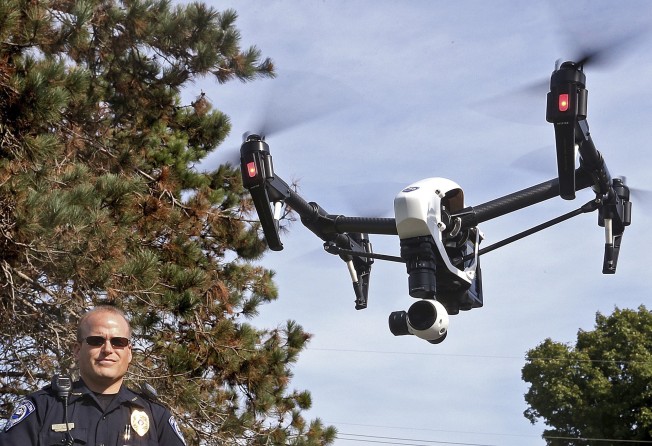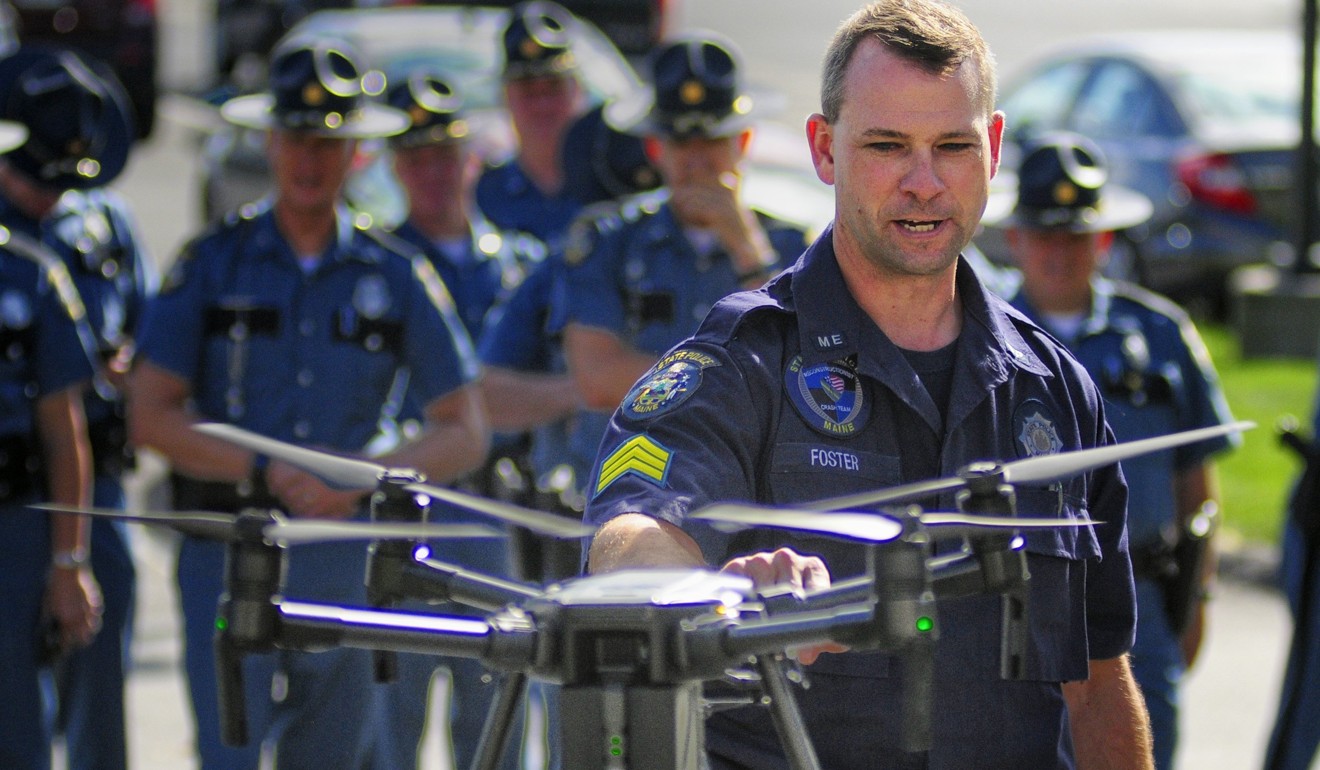
Real-life RoboCops! US police are turning to drones to fight crime and help civilians
Police and fire departments are finding new uses for the remote-controlled aircraft, including equipping them with heat sensors to find fugitives

No longer a novelty, drones are becoming an everyday tool for more police and fire departments, new research has found.
The number of public safety agencies with drones has more than doubled since the end of 2016, according to data collected by the Centre for the Study of the Drone at Bard College in New York.
The centre estimated that just over 900 police, sheriff, fire and emergency agencies now have drones, with Texas, California and Wisconsin leading the way.

While many law enforcement drone units are just getting started and are in place in just a fraction of the public safety agencies around the country, police and fire departments are continuing to find new uses for the remote-controlled aircraft.
They are being deployed to take photos of car accidents, guide firefighters through burning buildings and search for missing people and murder suspects.
Some believe they will change policing much like laptops in patrol cars, two-way radios and K-9 units.
“With this new environment we’re in with active shooters and mass shooters, you can be all over a school campus and see everyone who’s running out,” said Grady Judd, a Florida sheriff, who this year used money from drug seizures to buy 20 drones to cover all of Polk County night and day.
He stressed that the drones will be used only in emergency situations and not to spy on people. About a third of states, including Florida, require police to get a warrant before using drones in a criminal investigation.
Using drones, Judd said, is much cheaper than sending up a helicopter and allows for a faster response. Those equipped with thermal imaging can spot suspects at night.
“You can have a bad guy in a clump of palmettos pointing a gun at you and you can’t see him at all,” he said. “Every agency will have these teams in the future.”
Most public safety agencies with drones have just one, said Dan Gettinger, co-director of the drone research centre.
“These agencies are the test cases,” he said. “A lot of these programmes are still in their infancy.”
The centre’s research showed that more than twice as many agencies own drones as do those that operate helicopters and planes.
Police in Superior, Wisconsin, flew a drone over a refinery blaze in April to help firefighters see through thick smoke.

“We never envisioned working with the firefighters, but now that we have the drone, it makes total sense,” said Officer Bradley Jago, a drone pilot.
Most of the agencies with drones are smaller departments in rural areas, unlike users of manned aircraft operations, which are centered in heavily populated places.
The sheriff’s office in Putnam County, Ohio, a rural area dominated by farmland, added a drone last year after a deputy brought his own drone from home to help search for two men who broke into a farm building.
“We realised how useful it could be,” said Sheriff Brian Siefker, who said the department has since used the drone on accident investigations and to search for marijuana growing in cornfields. “The possibilities are endless.”